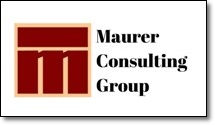‘Designing Strategies’ Newsletter
July – August, 2015 Volume 12 — Issue 66
“Do you really know what business you are in?” I ask this question of small business clients on a regular basis. Often I get that ‘deer in the headlights’ look as they try to decide why I would ask such a question. There I am, sitting in their office or studio where their company name and identity is clearly posted. I know what they are thinking: “Is this a trick question?” or maybe: “Have I hired the right person?” “This one seems to know nothing about me, so how can they help improve my business?” I’m
sure that a few even think: “What an idiot!”
 But, the question has a purpose, and a good one at that. The answer will tell how clear the business owner is about what the firm provides to customers – their true value. A CPA often thinks he or she provides financial and accounting services. An attorney often thinks he – or she – provides legal advice. An interior designer thinks they just provide design services, along with finishes and furnishings.
But, the question has a purpose, and a good one at that. The answer will tell how clear the business owner is about what the firm provides to customers – their true value. A CPA often thinks he or she provides financial and accounting services. An attorney often thinks he – or she – provides legal advice. An interior designer thinks they just provide design services, along with finishes and furnishings.
Small businesses provide far more value to customers than they give themselves credit for. You name the profession. You can be sure many of its practitioners think the name of their profession defines what they do. Nothing could be further from the truth. Each of you should be a problem solver providing exceptional solutions to customers’ problems and challenges. That is where your value is. Are you just selling stuff or providing solutions? Don’t be under compensated because you don’t see what your customers actually value.
CPAs find the best ways to keep their clients from paying more taxes than they have to – within the limits of the law, of course. They stay abreast of the latest changes in the tax laws to be sure their clients get every legal tax deduction. They provide peace of mind for those whose tax forms are far too complex to deal with on their own. They help small businesses with budgeting and cash flow forecasting. Yes, these are financial services, but the value and benefits for the customer amounts to so much more.
Interior designers typically provide design services as well as the finishes and furnishings necessary to complete their projects. But is that all? Not by a long shot. Designers spend an inordinate amount of time searching for the best items to meet an individual client’s needs. Not all fabrics or furnishings will stand up to a family with five children, two dogs, a cat and a gerbil, regardless of how nice they look or who they might impress. They provide stylish, durable and safe furnishings to families with young children.
Designers spend time and effort to determine the best placement for furnishings and equipment in both residential and commercial projects. Why? In order to improve safety, productivity and the most efficient use of the spaces they design. They serve as clients’ representative in talks with architects, contractors and sub-contractors who do the work to complete the project. They know the language and terminology of those groups. They understand what needs done first, second and third to help coordinate the work process. Clearly, they provide more value than making a space look nice enough to impress friends and neighbors.
Even retailers provide more value than just the products they sell. For the right customers, they provide specific products that meet their needs better than a competitor. Maybe their value is in the size and fit of clothing that isn’t found elsewhere. Perhaps they offer a broad selection of styles and colors, or extensive inventory for quick access and delivery. In retail situations, often the services provided exceed the value of the products themselves.
What is important to remember when marketing your company and its values, is that value, just like beauty, is in the eye of the beholder. What you consider valuable about your company, products and services, may not at all be what customers find of value themselves. It is up to you to determine what that value is for a specific customer or client.
It is time to take a Stop – Look – Listen approach to Value.
 STOP using a preset presentation for initial meetings with all customers and clients. Your internal perspective on how your product of service will be of value to customers may not be an accurate assessment. Every customer is different, and their needs vary. Take time to collect information on how you can best meet the needs of that particular customer. Then prepare a customized solution that has value for them, not the masses.
STOP using a preset presentation for initial meetings with all customers and clients. Your internal perspective on how your product of service will be of value to customers may not be an accurate assessment. Every customer is different, and their needs vary. Take time to collect information on how you can best meet the needs of that particular customer. Then prepare a customized solution that has value for them, not the masses.
If you are in a client’s home or office, LOOK around for clues of what the customer values and needs. Sometimes clients are not really clear on what they need, or what problems you might solve for them. Pay attention. Even when working with other businesses, you will be working with people, not the business structure. Individuals are unique and most put their personal needs above anything else. Everyone places value at different levels. Determining what they value most will help you provide the best solutions – for them.
Ask questions. Dig deep for clarity. LISTEN carefully to responses. Often, the need the client contacted you about is not necessarily their biggest problem, or the complete problem. As professionals, it is up to you to dig deeper into customer situations using visual input and responses to specific questions. Use your Who-What-When-Where-Why and How questions to clearly define your customer’s needs.
It doesn’t matter at all what type of services or products you offer. It doesn’t matter if you provide legal or financial assistance, interior design, graphic design or coaching services. It doesn’t matter if you provide a specific product or a wide range of products.
It is up to you to increase your value – and compensation for that value – by identifying the best solution for your client’s specific needs. The more valuable you, your product or service are to a customer, the more a client will be willing to pay. You are in the solutions business, regardless of what industry you operate in. Clients have problems and challenges. Small business owners provide solutions to those problems. And they provide value. Identify what customers and clients value from you and your firm.
One of the greatest values a professional service provider offers is an ability to see the bigger picture. They are also adept at evaluating what clients perceive as their problem. What clients might feel is their entire problem may well be too simplistic or just one of several symptoms. Seeing and analyzing symptoms can provide opportunities to develop or provide the appropriate solution. Use your skills to determine the real problem to be better prepared to outline the best solution – and value – that you can provide. With these tools added to your skills toolbox, you position yourself and your firm to receive higher compensation.
VISUALIZE — ANALYZE — STRATEGIZE
This complimentary publication is brought to you by Terri Maurer, FASID owner of Maurer Consulting Group, a small business management consultancy helping small businesses get on track, focused on growth and success.
For help getting your business moving in the direction you strive for, you can contact Terri L Maurer to schedule a time to talk about how we might help you. Terri can be reached by phone at: 330.283.3999 or tlmaurer@maurerconsultinggroup.com
MAURER CONSULTING GROUP 812 Westridge Road Akron, OH 44333
PH: 330.666.0802 Email: tlmaurer@maurerconsultinggroup.com www.maurerconsultinggroup.com






